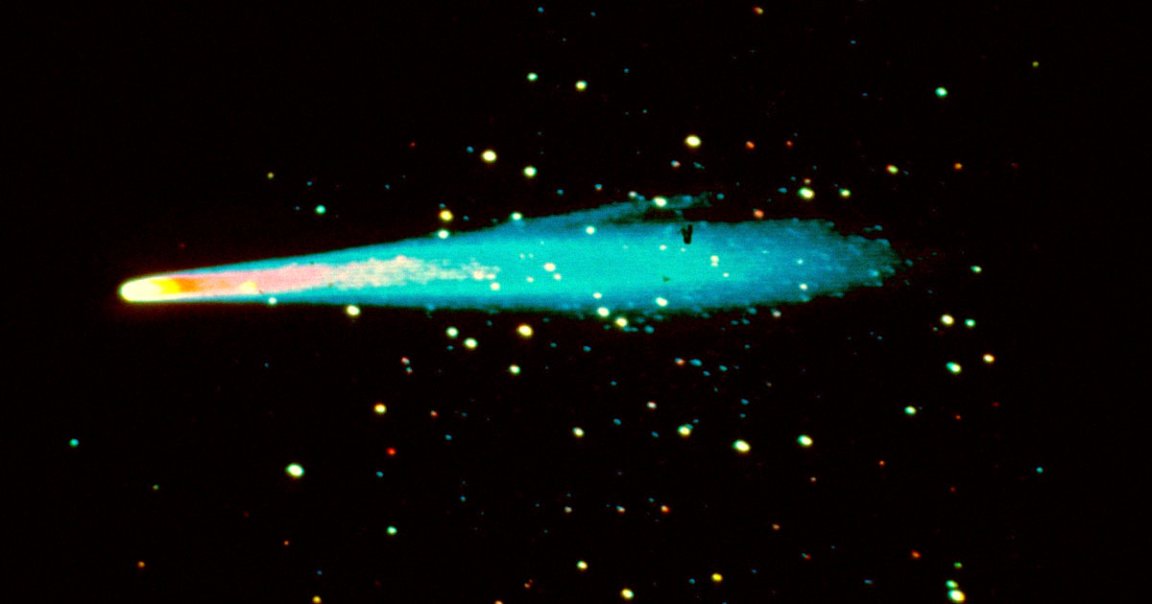Astronomers Investigate Unusual Objects Near 3I/ATLAS: What New Observations May Reveal
In recent months, the arrival of 3I/ATLAS — an interstellar object currently passing through our Solar System — has sparked global curiosity. It is only the third confirmed visitor from beyond our Sun, following the earlier detections of ʻOumuamua in 2017 and comet 2I/Borisov in 2019. But new observational reports have raised a fresh set of questions: Are additional unidentified objects traveling near the same region of space, and if so, what does that mean?
Although early discussions online have fueled speculation, astronomers emphasize that the situation is still evolving — and that careful data analysis is essential before drawing conclusions.
What We Know About 3I/ATLAS So Far

3I/ATLAS was first detected by the Asteroid Terrestrial-impact Last Alert System (ATLAS), a survey designed to identify small near-Earth objects. Its incoming trajectory, high velocity, and hyperbolic orbit strongly indicate that it originated outside the Solar System.
Interstellar objects are rare, but not unexpected. As telescopes become more sensitive and sky surveys more comprehensive, astronomers increasingly anticipate discovering more of them over time. Each one provides valuable information about material formed around other stars.
Reports of Several Additional Objects: What Is Actually Being Observed?
Multiple small observatories and amateur astronomers have reported tracking faint, fast-moving objects near the same region of sky where 3I/ATLAS was identified. Some online posts suggest that up to four additional bodies may be following similar inbound trajectories.
However, astronomers caution that:
-
These observations are preliminary.
-
Small moving points of light in survey images are common.
-
Determining whether objects share a common path requires large datasets collected over weeks or months.
Most early detections are simply flagged as “candidate objects” until verified through orbital calculations.
Could These Objects Be Related to 3I/ATLAS?

There are a few scientific possibilities that researchers are currently exploring:
1. Random coincidence
The night sky contains countless small bodies, and survey instruments detect new ones every week. Some may appear to be moving in similar directions until more detailed data clarify their paths.
2. Fragments from a distant parent body
Interstellar objects can occasionally break apart far from our Solar System. If 3I/ATLAS experienced fragmentation thousands or millions of years ago, several pieces could theoretically reach us along broadly similar trajectories — though this has not been demonstrated.
3. Unrelated Solar System objects misidentified in early scans
Asteroids or long-period comets within our own Solar System can initially appear hyperbolic in early data, only for later measurements to reveal elliptical orbits.
These explanations are far more likely than exotic interpretations and align with previous experiences from large sky surveys.
What Makes These Observations Difficult?

Tracking faint objects moving quickly against a crowded star field is challenging. When multiple telescopes attempt to observe the same region, small differences in timing, sensitivity, and atmospheric conditions can produce uncertainties in calculated orbits.
New objects must typically be:
-
Observed on multiple nights
-
Detected by multiple independent telescopes
-
Confirmed through refined orbital fitting
Until then, astronomers describe them as “candidate detections.”
Why Haven’t Space Agencies Issued Formal Statements?
Space agencies and research institutions only release announcements when:
-
An object’s orbit has been verified
-
Data are independently confirmed
-
The discovery meets scientific publication standards
At this stage, the reports circulating online represent early observational chatter, not official confirmations. Researchers often wait until observations are strong enough to withstand peer review before issuing public updates.
What Future Observations Could Reveal
Upcoming facilities and instruments may help clarify the nature of these objects:
• The James Webb Space Telescope (JWST)
JWST can analyze the composition of faint objects if they are bright enough and if NASA allocates observation time.
• The Vera C. Rubin Observatory
Set to begin full operations soon, this observatory will dramatically increase our ability to detect fast-moving objects with daily sky mapping.
• Global coordination among observatories
If interest grows, multiple facilities could collaborate to obtain precise orbital data.
These tools may help determine whether the reported objects are:
-
Interstellar visitors
-
Long-period comets
-
Asteroids within our own Solar System
-
Or simply noise and misidentifications
Why the Study of Interstellar Objects Matters
Whether or not multiple bodies accompany 3I/ATLAS, its arrival is meaningful. Each interstellar object brings clues about:
-
Chemical diversity in other star systems
-
How planets form around distant suns
-
The processes that eject debris into interstellar space
-
The frequency of material exchange between stellar neighborhoods
Discovering several such objects within a single decade may simply indicate that our detection technology has reached a new level of sensitivity.
A Moment of Curiosity, Not Alarm
Astronomers emphasize that based on current evidence:
-
No known threat exists to Earth
-
Orbital paths remain under study
-
Most reported “mysterious objects” likely have natural explanations
The fascination surrounding 3I/ATLAS and its possible companions reflects our growing ability to observe the universe with greater detail than ever before.
The Road Ahead: Science, Not Speculation
As new data arrive, scientists will update their assessments. Some early “detections” may prove to be artifacts or unrelated objects, while others may turn into confirmed discoveries. That process — slow, careful, and evidence-driven — is how astronomy has always advanced.
For now, the only certainty is that 3I/ATLAS itself has already earned a place in history as one of the few confirmed interstellar visitors. Whether it is traveling alone or alongside other distant travelers remains an open question that researchers will continue to study in the coming months.
